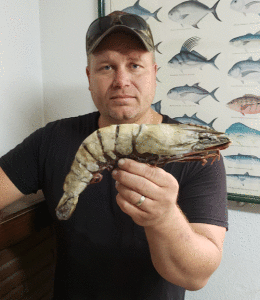Invasive Species Pose a Threat to Native Ecosystems
What comes to mind when you think about an invasion? UFOs hanging ominously above the world’s major cities? What about shrimp larger than your head, or fish studded with poisonous spikes? Sometimes, reality is stranger than fiction: these creatures exist, and they are invasive.
Invasive species infiltrate ecosystems other than those where they naturally belong. They can have devastating impacts on both native species and the environment.
There are many ways invasive species can end up somewhere they do not belong. Some are brought in on cars, ships and planes. Other times, they are introduced through trafficking and trade; some species are imported for their exotic appearances then are released or escape their enclosures. Some invasive species were introduced for commercial or ecological purposes.
Invasive species generally lack natural predators to keep their populations controlled. And, because their populations can grow unchecked, they can quickly outcompete native species.
The Gulf of Mexico has become home to many invasive species that are cause for concern. Once invasive species take hold in an area, “they are not manageable,” says Tony Reisinger, Texas Sea Grant coastal and marine extension agent for Cameron County. “You do what you can to eliminate the ones you know about, but there will always be another one lurking around the corner.”
Lionfish, for example, are invasive and voracious predators that outcompete most native fish. They are covered in venomous spines which offer protection against any would-be predators in the Atlantic. In areas where lionfish have become established, such as the Caribbean, Bahamas, and the Gulf of Mexico, these invaders have ravaged ecosystems and decreased biodiversity.
Reisinger says that “we didn’t know when they [got] here, but they’re here. People are seeing them [in Texas], and they’re reporting them.” He cautions that lionfish are “dangerous and must be handled with care,” because of the venomous spikes that coat their bodies. But, once they’ve been killed and dressed, they’re as edible and delicious—as any other fish.
The Asian tiger shrimp (Penaeus monodon) is another species native to the Indo-Pacific that has taken up residence in the waters of the Gulf of Mexico. These shrimp are massive—they can grow up to a foot long and weigh nearly a pound.
Tiger shrimp are much larger than the species of shrimp that naturally inhabit the Gulf, and experts worry that tiger shrimp might pose a threat to native shrimp species, either by spreading diseases or outcompeting them for resources.
Reisinger says that while, “the population hasn’t seemingly taken off, I suspect that they’re here, and they’re breeding. We’ve had fishermen bring us juveniles—about eight inches long—that were caught in the Brownsville ship channel.”
Reisinger notes that you can, in fact, eat the Asian tiger shrimp. He shares a recipe from Shrimp Farmer, Gordon Lipscomb, “You peel it, leave the tail on like you usually do, then you split it open and lay in some cream cheese and jalapeno and then wrap it with bacon and put it on the grill.”

Captain Seth Sanders, a shrimp vessel owner from Brownsville, Texas, captured this 12.5-inch Asian tiger shrimp while trawling for white shrimp.
-Photo credit: Tony Reisinger, Texas Sea Grant.
